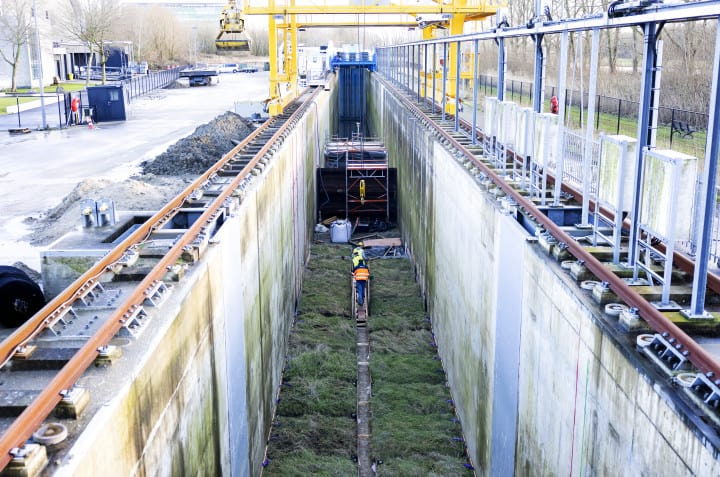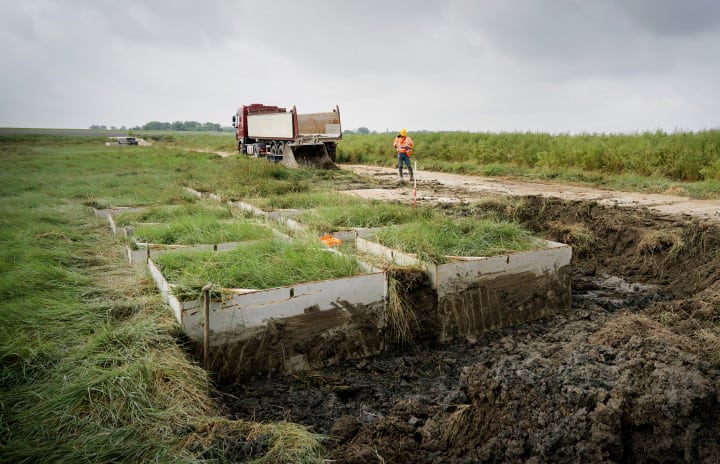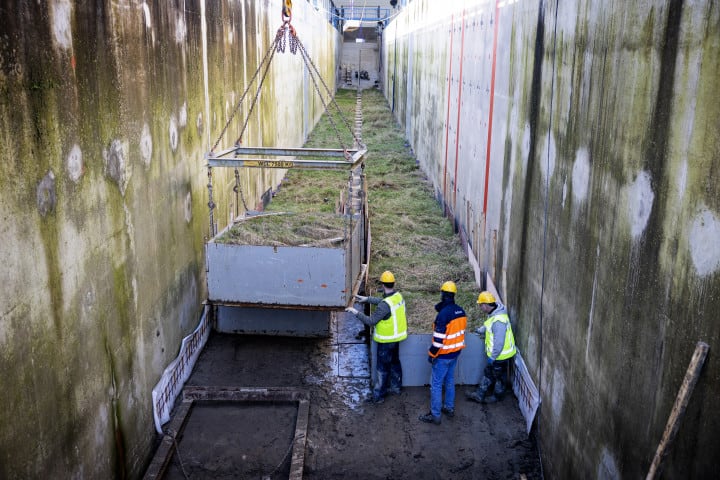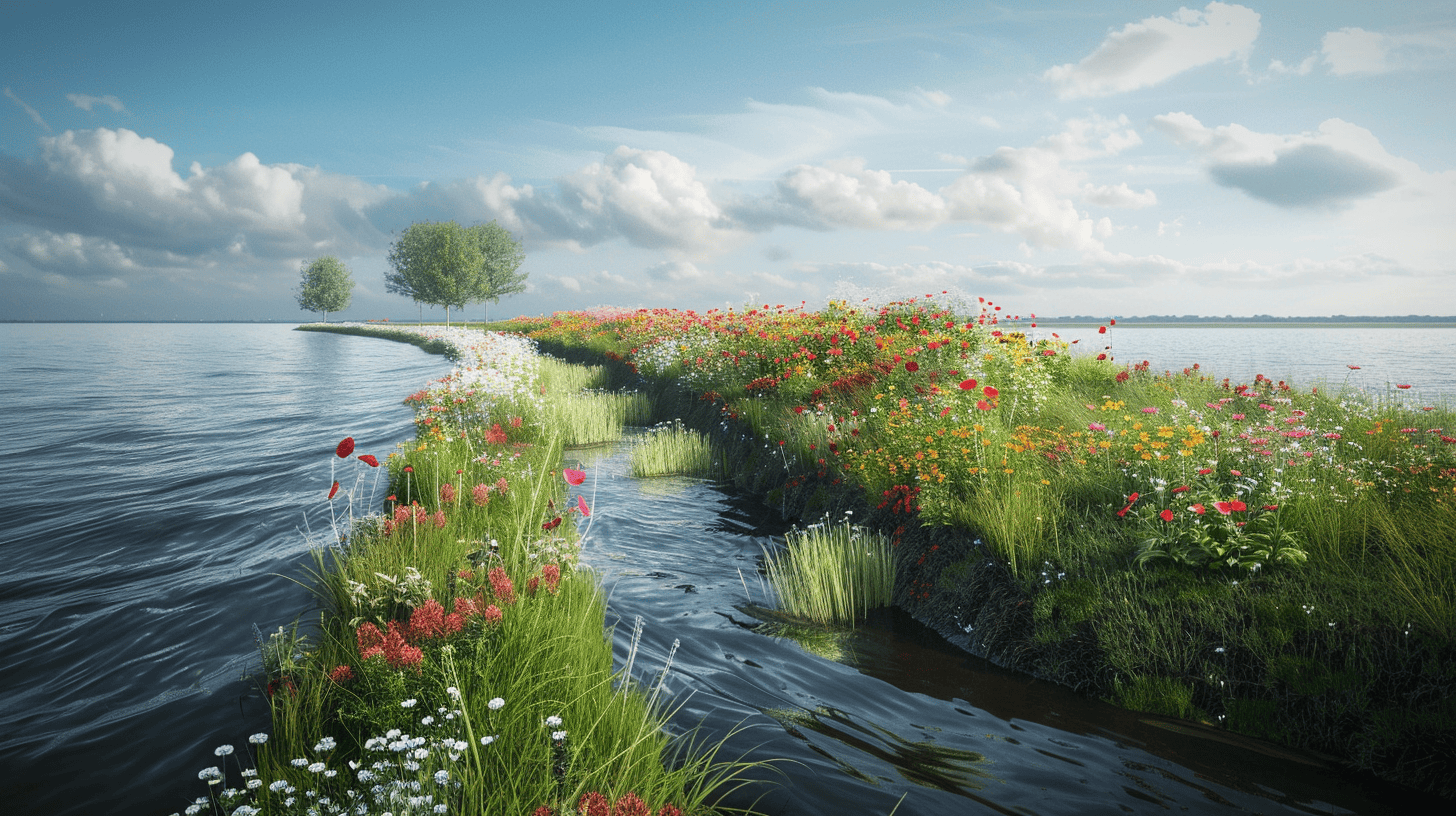
How do we continue to protect the Netherlands from water? “With living dikes” is the answer from coastal engineer Bas Borsje. He is an associate professor at the University of Twente (UT) in charge of the Living Dikes project. Borsje advocates for more room for water and natural living dikes. “Paved dikes are not sustainable,” he said.

Living dikes consist of a dike covered with vegetation and a foreland (salt marshes). They are found worldwide. The Wadden Sea coast and the salt marshes in the Westerschelde are examples in the Netherlands. They prove incredibly effective in inhibiting waves; the foreland dampens the force of the waves before they reach the dike. “Without foreland, the force of the waves once they reach the dike is much stronger. So, a dike doesn’t have to be as strong. And, perhaps the most important advantage: a living dike grows with the sea. The vegetated areas in front of the dike slowly rise with the sea level,” Bas Borsje explains.
The big question is: will they stay put if there is a severe storm? Only if the answer to that question is ‘yes’ can living dikes be included in the plans of water boards to make the Dutch coast future-proof.
Why this is important:
We must learn to cope with a changing climate. A rising sea level – certainly for the Netherlands – is an important part of this. How do we continue to protect the Netherlands from water?
66 blocks of vegetation, a 300-meter-long flume, and 90 million liters of water
It took two million euros of investment and over four years of preparation to answer that question. This year, it was finally happening: 66 blocks of 2 by 2 meters wide were cut from a Frisian salt marsh and transported by truck to knowledge institute Deltares. Two long rows of thirty blocks are lined up in the Delta flume. Nowhere can they generate higher artificial waves than in this flume of 300 meters long, 9.5 meters deep, 5 meters wide, and with room for ninety million liters of water. In the flume, researchers can test the effect of extreme waves on dikes, dunes, or breakwaters at full scale.
On one side, a representative piece of dike is recreated to scale. In the case of this project, an 11-meter-high dike. On the other side, a computer-controlled ten-meter-high steel wall moves back and forth to mimic the desired wave height or steepness. The flume is full of cameras, sensors, and other measuring equipment to record what is happening above and below water.



Simulating a superstorm
From February 19 to March 20, the Delta flume will fill up every morning, testing the effect of the natural dike under various conditions. On day ten of the experiment, the press, project partners, and other interested parties were invited to see precisely how it works.
“We now know vegetation slows down waves up to a meter high. But, we also need answers to what happens during a storm that occurs only once every ten thousand years,” Borsje explains.
“Last week, we simulated a superstorm here, with a wave height of 3.5 meters. These conditions only occur once every ten thousand years,” Vera van Bergeijk, UT alumnus and researcher at Deltares, explains enthusiastically. “But today, we’ll keep it at 0.75 meters so that you won’t go home with a wet suit,” she reassures visitors.
A childhood dream
Why do we want to replace our asphalt dikes with these organic, natural varieties? Borsje: “First of all, asphalt is not natural; it doesn’t suit the sea, which is dynamic. Besides, asphalt has to be replaced every fifty years. And if we face more extreme weather conditions – storms, extreme rain, a higher sea level – we will have to reinforce our current dikes. That will cost billions.”
The experiment is still over 20 days away, and official results are unknown. But it looks promising. “The salt marsh is suffering but is holding up well. We see it is moving with the waves, not breaking off, and affecting the water flow.” The experiment is like a boyhood dream come true for the coastal engineer. As a little boy, he worked on the beach with a shovel and a bucket. “And then just waiting to see how long my sand castle stayed up,” he smiles.
About the project:
A UT team leads the NWO Living Dikes project. Besides Bas Borsje, associate professor of Nature-based Flood Protection in the Department of Marine and Fluvial Systems, the team consists of professor Suzanne Hulscher, postdoctoral researchers Pim Willemsen and Thomas van Veelen, PhD student Jos Muller and technician Emre Ozturk of the Faculty of Engineering Technology. In addition to UT, TU Delft, NIOZ, Van Hall Larenstein, Deltares, University of Groningen, and Wetterskip Fryslân are also involved. The High Water Protection Program (HWBP) and NWO funded the research.








